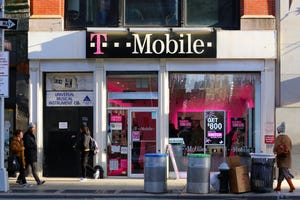Telia Carrier Expands Into Mexico
Wholesale operator finds friendlier regulatory environment and growing demand for backbone services.
May 3, 2018

Telia Carrier announced this morning that it's moving into the Mexican telecom market, marking its first venture into Latin America. The wholesale provider says its customers, including major content providers and ISPs, are eyeing the Mexican market as a source of growth, especially as mobile services expand and become more competitive there.
The other driver is a regulatory change, says Luis Velasquez, the Mexico business manager of Telia Carrier. He tells Light Reading in an interview that the Mexican government "is making it more friendly for international investors and carriers," and also issuing its own RFPs for broadband backbone development in some parts of the country, in an effort to bring more Internet capacity to the country.
"The government is trying to wholesale some backbone assets," including building out networks along the electrical grid, Velasquez says. "They want to bring international players in to operate their backbone assets and provide metro access in order to enable new mobile operators to enter the country without having to first invest in a lot of infrastructure."
Telia Carrier got its license to operate in Mexico in April, and is building out its physical infrastructure to connect the Mexican market to its global backbone, from which it delivers a range of services including IP transport at 100G, Ethernet, IP Exchange and cloud connections, says Ivo Pascucci, Telia Carrier's vice president and head of sales.
"We do have a lot of Mexican customers connecting to us in the US along the border," Pascucci says. Telia Carrier had done a major fiber build in Texas, connecting major cities including Dallas and Houston, a couple of years back, which has driven a lot of the traffic in that area, he adds.
Increasingly, content providers and major cloud service providers are looking for connections to data centers in Mexico, including in Mexico City and Queretaro, a city about three hours from the capital which has become a hub for data centers and interconnection, Velasquez says.
"One of the main challenges had been in the metro network," he says. Often there are islands of connectivity and Telia Carrier sees a real opportunity in providing high-speed connections between those islands.
You're invited to attend Light Reading’s Big Communications Event -- the ONE event that delivers fresh perspective on the rapid transformation of the telecom industry and the road ahead. We'll see you May 14-16 in Austin -- communications service providers get in free!
In addition, competition for Mexico's Telcel wireless operator, sparked by 2013 regulatory reform, has helped the mobile market grow, and that is putting wireless broadband devices into the hands of Mexicans who can't get wireline service, driving up the need for more backhaul. Velasquez says the Mexican government continues to push rules that help newer competitors to incumbents such as Telmex.
For Telia Carrier, the move into Mexico is likely just the first into Latin America, Pascucci says.
"We do have in mind to expand beyond this. Latin America for us is our fastest-growing region in terms of traffic so certainly a region we would look to do some further expanding," he says.
— Carol Wilson, Editor-at-Large, Light Reading
You May Also Like










